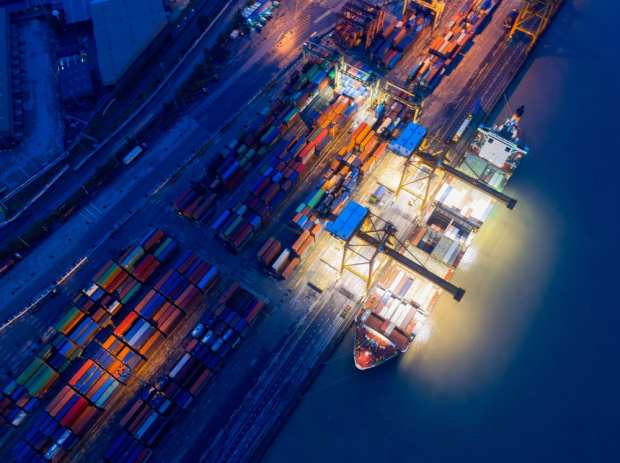Track-And-Trace As The Catalyst To Supply Chain Efficiencies

Amidst the flourishing supply chain FinTech market, there are now more solutions than ever before tackling an endless list of historically friction-filled points in global trade. Whether it be facilitating faster payments to suppliers across the border, adopting blockchain-powered trade financing, or wielding API integrations or smart contracts to digitize the mounds of paper involved in global trade, there is no shortage of opportunity for technology to disrupt this industry.
However, looking at the bigger picture, global supply chain management is all about getting products from Point A to Point Z on-time and aligned with quality standards. That truth makes track and trace (T&T) among the main pillars of supply chain management, according to rfxcel Co-Founder and CEO Glenn Abood.
“The concept of track and trace has been around for a very long time,” he told PYMNTS in a recent interview. “The need to know where your goods are at any time has been important since caravans crossed the desert. What has changed, however, is the timeliness and volume of data.”
That shift is a direct result of that massive injection of technology across supply chains. In track and trace, floods of data are streaming in thanks to the ability of supply chain participants — including buyer, supplier and logistics service providers — to integrate their back-end platforms directly with each other. Information is also pouring in thanks to the adoption of high-tech tools like the Internet of Things and smart sensors, which enable those participants to obtain real-time visibility into an item’s location.
However, that influx of data can quickly overwhelm organizations, said Abood, while there are a host of other challenges linked to modern T&T processes. For instance, organizations’ internal track and trace initiatives can quickly run into problems if that business is unable to easily integrate into their partners’ systems or aggregate information from those companies — especially across borders, he said, and especially when business partners are smaller firms.
Compliance is also a growing burden on organizations, and government mandates that drive businesses to elevate their track and trace capabilities are struggling to maintain compliance across borders.
“This is especially challenging when doing business with countries that are establishing new requirements,” he said. “In these situations, it is important to have teams on the ground who can ‘decipher’ the new standards.”
However, when resources and margins are tight, having the capacity for on-location personnel to understand and implement a country’s unique track and trace requirements can be a significant hurdle to overcome.
These pain points can be unusually large for specific sectors where track and trace is paramount to the successful transport and delivery of products, like pharmaceuticals — an industry that not only faces intense regulatory track and trace requirements but also comes with an elevated need to manage shipments’ temperature and other environmental factors. Internet of Things and smart sensor-connected devices are useful in managing a shipment’s environment. However, they also add to the challenge of data aggregation and management.
While IoT has certainly elevated firms’ track and trace capabilities, Abood pointed to another technology as showing promise to addressing modern-day friction in this space: blockchain. Organizations are increasingly looking to distributed ledger technology to manage their supply chains, including track and trace processes.
Last week, for example, IBM announced that its Food Trust blockchain solution would be used by Migros, the largest supermarket chain in Switzerland, to track and trace food items through its supply chains. Only days prior, Amazon and Accenture published a sponsored article in Forbes pointing to the ability of blockchain to enhance track and trace functionality, among other supply chain functions.
IoT, blockchain, smart contracts and other emerging technologies have the potential to strengthen track and trace capabilities, and will be vital in promoting compliance and boosting supply chain visibility, Abood said. So to look at the bigger picture, the knock-on effects of a more sophisticated track and trace could have widespread financial impacts; Abood pointed specifically to the blockchain technology of the smart contract, which allows for automated electronic payments to be triggered once a set of conditions has been met. Often, track and trace data is the catalyst for that event.
“In most cases, the supply chain traceability data is used as the triggering event for the exchange of payment,” he said. “Although not as ‘sexy’ as smart contracts or blockchain, the track and trace information is a foundational component of accelerated payments via smart contracts.”
